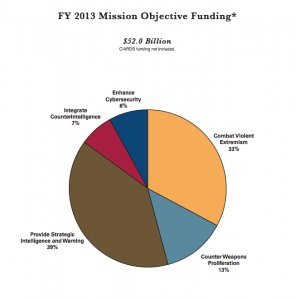On Laughter and Forgetting Our EU Spying
I’ve long been intrigued by the response to the discovery of CIA spies in Germany, starting last week when seemingly everyone wanted to admit that the alleged spy was CIA’s. Unlike the Pakistani, Mexican, Afghan, and other precedents, the government either didn’t succeed or didn’t care to prevent Americans from learning about our overseas spies.
Now we’ve got competing explanations for why we spy in Germany.
According to Eli Lake source David Albright (whom Jim regularly embarrasses for his Iran propaganda), we spy on Germany because AQ Khan got much of his plans for Pakistan’s nuclear program in Germany. Lake also points to Germany’s close relations with Russia. The CIA has to spy on Germany, then, because Germany is not very good at spying on others, including Russian spies.
And of course, the forerunners to Russia’s modern spy services had plenty of experience operating on German soil. Vladimir Putin famously ran agents for the KGB from 1985 to 1990 out of Dresden, which was then in communist East Germany. His successors are still in the country, albeit on less friendly terms. “There is a huge Russian presence in Germany,” said the senior U.S. intelligence official.
Part of the current concern about Russia’s activities in Germany stems from unease about Berlin’s equivalent of the FBI, known as the Bundesamt für Verfassungsschutz (BFV). One former U.S. intelligence officer who worked on European issues said the BFV had a strong reputation for identifying and neutralizing domestic threats inside Germany, but was not very good hunting so-called “moles” – foreign agents burrowed into their spy services. “I can tell you they never watched us very carefully at all,” this official said. “That is almost definitely going to change now.”
Meanwhile, German Die Zeit editor Jochen Bittner relied on CIA’s former German Station Chief Joseph Wippl for explanation; Wippl provided a bizarre suggestion that CIA was accidentally treating Germany like it treats “Third World” countries, and anyway the Germans aren’t willing to do the dirty work to gain full membership in a Five Eyes like relationship.
I asked Joseph T. Wippl, who was the C.I.A.’s Berlin station chief in the early 2000s, why the agency had recruited German sources. “The C.I.A. has developed strongly in the direction of a third world agency, in that its officers work in places where the U.S. has great leverage over others and where there is no rule of law,” he said. “They are not used to or have not been trained to work in countries with similar democratic, constitutional institutions.” At the same time, he went on, the Germans had never seemed interested in the level of cooperation that might obviate this sort of unilateral snooping — the sort of treaty relationship that America has with Australia, Britain, Canada and New Zealand, the so-called Five Eyes intelligence alliance.
To suggest that the Germans could be treated as a Sixth Eye is a flattering idea. Yet I doubt the Germans would accept the honor. As is the case with America’s nuclear umbrella, we’re happy to have the protection while being still happier not to have to carry the responsibility. If Germany entered into a real intelligence alliance with America, the government would have to deal with a load of dirty knowledge — and lose the benefit of plausible deniability.
As you read Wippl’s comments, remember his own rather dubious exploits in Germany.
This whole conversation feels a lot like Keith Alexander’s spectacularly successful effort to use a few journalists to cover up his admission that we do spy in Europe, but only for targets — Chinese, Russian, and al Qaeda — that can be deemed not-European.
But it ignores the great deal of spying we do on the European Union, which has long served to strengthen Germany, but the recent collapse of which has eliminated the most viable competing reserve currency in the world.
There has been a tremendous adjustment in the European power base in recent years, which largely stems from the EU, which in turn largely stems from Germany’s successful effort at making the rest of the EU absorb the pain of the financial crisis. I guarantee you we were aggressively spying on that, all in the name of preparing for instability (but surely using that intelligence to preserve the dollar’s competitive advantages).
Meanwhile, all this takes place against the background of negotiations on the TTIP, in which the US would demand concessions from Europe that gut many of the better policies of the EU.
We may be concerned that the Germans have good reason to want closer relations with Russia than we want them to have. But we also have a financially competitive relationship with Germany, and there’s no reason to believe we’re not doing a ton of spying to our advantage. Key details of that spying has not (yet) been fully revealed. But I do wonder if that’s part of the issue here.



